Almost exactly a year after announcing the Polar Ignite GPS watch, the company is back with another wearable – the similarly named Unite, which takes all the Polar Ignite features, slashes the internal GPS, and drops the price by $50. Oh, and they’ve changed the sensors, bands, screen, and thickness. But wait – while it lacks internal GPS, it can still leverage your phone’s GPS if that’s nearby.
And thus, I’ve explained the Polar Unite in a single paragraph. Sure, I could end this non-review, but I’ve still got 6 hours till this watch launches, so I might as well fill up this page with all sorts of hands-on details on how it works and whether it makes sense for ya. Also, for those playing Branding Bingo at home, drink for every time I manage to mistype Unite as Ignite. And two drinks for when I mistype Unite as Unit or United.
The Polar Unite is theoretically aimed at the same audience as the Fitbit Charge 4, also priced at $149. Except, that one has GPS, but is a band wearable as opposed to a full watch. And while the Fitbit Charge 4 undeniably has fitness features, Polar’s Unite is in an entirely different league. It’s got the same automatic workout coach (called FitSpark) as the higher-priced Polar Ignite, and the same sleep and 24×7 tracking as Polar’s $400+ GPS watches. The question is, how does that fit into a scheme where the Apple Watch Series 3 is at $169 these days? Well, that’s trickier and will really depend on what you want out of it. For that, I’ll first have to explain the nuances (and pitfalls) of this watch.
Or, you can simply hit the play button below to get all the details:

Also, just a quick note that Polar sent over this media loaner to toy with. Once I’m done I’ll get it back to them (along with this Grit X I’m finally done with). Just the way I work – leave no tracks and all that. If you found this post useful, simply hit up links at the side, or consider becoming a DCR Supporter.
With that – let’s dive in!
High-Level Explainer:
Now, as I stated earlier, the Polar Unite is essentially a Polar Ignite without built-in GPS. But there are a handful more differences beyond that which make it…maybe…better?
First though, let’s quickly cover the main features it has in it. Starting with the hardware side of life – here’s the specs:
– Claimed daily battery time of 4 days, workout battery time of 50hrs with connected GPS (if your phone can last that long)
– Color touchscreen display, single side button
– Waterproofed to 30 meters
– Display is not always-on, only turns on when raising wrist, like Apple Watch (pre-Series 5) or most Fitbits, workout mode *does* have always-on option though
– Polar Precision Prime optical heart rate sensor on back (same as new Grit X series)
– Strap design is new to Unite, a blended fabric and silicone strap
– Swappable wristbands
– Bluetooth Smart HR sensor support (though not power meters/cycling/footpod sensors)
– No music/storage on watch, nor NFC/contactless payments
Virtually everything above mirrors that of the Polar Ignite series. Polar doesn’t have an app store, so you won’t see that. And the only real downside here is the lack of GPS internally and the fact that the display turns off to save battery after a few seconds.
From a major software features standpoint, it mirrors all those functions from the Polar Ignite. Here’s the run-down:
– Includes ‘FitSpark’ feature which gives you daily workout options based specifically on history + Nightly Recharge
– Includes ‘Nightly Recharge’ feature that looks at breathing rate/heart rate/heart rate variability (ANS data) to figure out if you’re recovering at night
– Includes ‘Sleep Plus Stages’ which adds in REM/Light/Deep sleep tracking, and sleep score
– Includes ‘Serene’, which are guided breathing exercises (like what Fitbit and others have)
– Includes structured workout support, so you can create workouts online with specific steps to follow
– Includes ‘Training Benefit’ feature
Next, just for completeness, here’s a quick list of all the ‘things you expect’ on a wearable (especially a Polar one), but I figured I’d list them here just in case:
– Tracks general activity metrics (e.g. steps, distance, calories, etc) 24×7
– Tracks heart rate 24×7
– Tracks sleep (see new sleep features though)
– Includes VO2Max score (aka ‘Running Index’)
– Includes ‘Fitness Test’ feature (VO2Max test while lying down)
– Includes timers (countdown timers & stopwatch)
– Maximum of 20 sport profiles on the watch itself (far more than Apple, Garmin, Fitbit, or Suunto allow at this price point), some 100 sports on platform to add to watch
– Can apply both heart rate zones and speed zones (no power zones/nor power meter support)
– Accelerometer-based speed/distance when no connected GPS is available (or inside on treadmill)
– Does *NOT* have multisport (aka triathlon) mode
So, about now you’re asking yourself how’s it different than the Polar Ignite? Easy-peasy, here’s the quick and dirty list:
– No built-in GPS on Polar Unite (it will leverage your phone’s GPS though)
– Band design is different, similar to Apple Watch – better in some ways, less so in others
– Unite has color-themed watch face customization, Ignite does not
– This is 32g, versus the Ignite is 35g, so you can now eat one extra bit of ice cream
– Unite daily battery life is 4 days versus 5 days for Ignite
– Unite workout with GPS battery life & optical HR sensor enabled is 50 hours versus 17 hours for Ignite (and internal GPS)
– Unite uses the new Polar Grit X optical HR sensor with different LED colors
– Unite optical HR sensor is flush with the back of watch, Ignite has a sensor bump/pop-out
– Unite has a slightly brighter display than Ignite
– Unite is $149, while Ignite is $199
– Unite is usually impossible to type right 30 times in a row, Ignite is easier
And with that, we’ve wrapped up all the differences between them. Plus, I’m out of bullet points – I definitely used them all by now. Ok, let’s walk through the main features.
The Basics:
Once you crack open the box you’ll find the watch inside. Also of note – Polar changed their box design to this swanky new one. It’s kinda clever.
Also of note is that Polar changed their charging clip here (unfortunately) to this cable-less variant.
They’re a pain in the butt in most cases to use with laptops/desktops/anywhere without a weird USB port spot.
The first thing you’ll probably notice on the Unite is the removable band. It looks like this mysterious blend of fabric and silicone. Seriously, it’s kinda cool. But in reality, it’s just laser-etched into the band. Still, it feels nice.
It is however also a direct softer duplication of the Apple Watch band design where the strap inserts back into itself. The only problem is that Polar’s manufacturing design or tolerances isn’t quite good enough to pull it off. So for first-time usage I’ve found getting the pole into the hole is really challenging. It’s just a super tight fit and requires a substantial amount of force and fiddling around.
Polar says over time and with more practice/usage it’ll loosen up a bit and be easier to get in.
I’ll have to take their word on that at this point and will circle back later after a few weeks. Still, I do really like the fabric/silicone blend. It’s mysteriously alluring.
Next, there’s the touchscreen display and single button. The screen appears slightly brighter than the Ignite, and Polar says it is actually very slightly brighter than the Polar Ignite. As noted, you’ll largely interact with the screen via touch, though there’s also a dedicated button on the left. I’ve found the touch control so-so. For swipes left to right it’s fine, but I find that either I or the watch have often missed on up/down swipes (like in some of the menus). It’s not a big deal, and I suspect over time I’d get better at the nuances of it.
On the back of the unit you’ll find the new optical HR sensor. This is the same sensor as the Polar Grit X which came out back in April. That sensor is slightly different than the Polar Ignite or Vantage series in that it changes the LED coloring. This sensor will monitor your heart rate 24×7, as well as during workouts:
Flipping the unit back over let’s dive into menus. First up is the watch face, showing me the time. There’s only two watch faces, digital or analog. And then within that, you can pick from half a dozen or so colors to accent them (to match the wrist straps available):
I can swipe left or right to iterate through the other widget screens. In fact, above it actually shows my steps atop the time (using the blue band around the edge). When tapping that, I can get more details about steps:
Same is true for heart rate:
There’s also one for sleep. While it takes 3 consecutive days of wearing the Unite to get more advanced sleep information, you’ll get preliminary information immediately.
From a sports standpoint, the widget will show your last workout, and then you can tap it to get more details about that workout or previous ones:
There’s also a FitSpark widget screen, which will give you a workout suggestion for the day. But more on that in the next section:
If you press the lower left button you’ll be able to access the menu to start training, but it’s also where you can swipe down once to access Serene:
Serene is where it’ll walk you through guided breathing exercises:
In this same area is where you’ll find timers (stopwatch and such), as well as the Fitness test:
It’s also where you can dive into the settings and pair your phone, sensors, and change things like how it displays certain details such as distance or the time of day.
Finally, you can swipe up from the bottom of the screen to access smartphone notifications. Like with the Polar Grit X a few months ago, I’m having problems here as well on timeliness of these notifications. My other devices get them instantly, but in some cases I’m seeing delays of up to 30 minutes before a notification appears. It’s unclear to me if this is just a ‘DCR Issue’, or something wider.
And then you can swipe down from the top to access the screen lock, do not disturb mode, and alarms.
With that, let’s talk sports.
Sport Details:
If you’re buying the Polar Unite, it’s likely for sport or fitness usage. And in that realm, it does quite a bit. As I noted earlier, it’s not much different than the Polar Vantage or Grit X series in terms of the main sports features. Where it differs is lacking some of the more advanced aspects. For example, you won’t find Recovery Pro or Training Load Pro here, nor will you find the new Hillsplitter feature.
But it does have FitSpark for automated workout suggestions, as well as the ability to download structured workouts to it. And of course, while it lacks internal GPS, you can still leverage your phone – which probably works for many people.
We’ll start with FitSpark, since that’s one of the big features of the Unite. From the main widget page you’ll see this screen. It’s telling me that my workout for today should be a cardio one:
And when I tap it, it gives a bit more details. First, it should be a ‘Cardio Medium’ effort of 1 hour and 4 minutes, staying in heart rate zones 1-3. Which is oddly perfect, since that’s exactly what I planned for today (60 minutes technically, but close enough). On the upper edge you see it also says ‘Strength’ and ‘Supportive’, which are the other two workout types it’ll recommend.
When I hit that ‘More’ button, it’ll give me other workout options, in this case doing a ‘Core Regular’ workout for 25 minutes, or a ‘Mobility Dynamic’ workout for 23 minutes. There’s also a flyer of an option for ‘Cardio Long’, at 1hr 48mins.
If I tap that ‘Core Regular’ workout, it gives you a bunch of explainer text, but lower down you’ll see the exact core moves it wants you to do, complete with little moving animated peoples:
It also shows the set numbers next to it. The same is true for the ‘Mobility Dynamic’ workout:
Going back to my actual Cardio Medium workout for today, it shows some intensity phases to stay within. However, these blocks of time don’t match the actual lengths. For example, in reality this workout would have me do 10 minutes warmup (blue below), then 49 mins ‘work’ (green below), and then 5 mins cool-down (blue below). Obviously, that’s not three equal parts like represented below.
Once I’m ready, I’ll tap the ‘Start’ button, which then brings me to choose the exact sport.
See, for Polar FitSpark it doesn’t care or specify about sports for these cardio workouts. Instead, it’s focused on your heart rate. So in this case, it’s an indoor ride. So I’ll select that – and also get on my bike.:
After that, I simply press start and get to it. It’ll show me a banner as I start each section with the heart rate zone and duration, and then show me a gauge at the top with the target and my current spot in zone, as well as time remaining.
The coloring changes based on the zones, for example my cool-down:
Afterwards, I’ll get a summary (more details on those in a moment):
Now, what about GPS workouts? Fear not – let’s talk there based on a workout last night. Now all but one of Polar’s other wearables have built-in GPS, whereas the Polar Unite will depend on your phone for that. However, this isn’t Polar’s first BBQ when it comes to leveraging your phone for GPS. In fact, the band-based Polar A360 and A370 had the same technology as well.
When you first set up the Polar Flow app on your smartphone, it’ll prompt you to confirm the GPS permissions (and just after that, permissions for smartphone notifications):
Then, you’ll go into the sport menu like normal to start a workout. To do that simply tap the lower left button, and choose to ‘Start Training’. It’ll give you a swippable list of workout types, just like with FitSpark. You can customize all these, including the exact data screens and data fields you’ve got configured:
If you select an outdoor workout type that leverages GPS (like Road Running), you’ll then see an icon for phone connectivity. This shows whether it’s connected to the phone or not, then if it has GPS lock. At first it’ll be red:
Then once connected to the phone it turns orange:
And then finally green once it’s got GPS lock:
Meanwhile, on the heart rate side, it’ll show optical HR lock once ready. Or, if you’ve got a Bluetooth Smart chest strap paired, it’ll show that too.
With that, you’re ready to run. Now since it depends on your phone’s GPS for the GPS track and distance, you’ll obviously need to carry that with you. The most ideal spot for GPS signal is an armband. But I didn’t have one of those that actually fits my phone, so I just tossed it in my running shorts pocket and off I went:
Of course, exact placement of the phone will impact accuracy, so I’ll dive into that later.
In workout mode I’d strongly recommend turning on the always-on display, otherwise it’ll constantly turn-off on you. To do so, simply swipe down from the top and tap the light bulb:
When it comes to seeing your workout data, the watch screen is off unless you raise your wrist. When you do so it’ll turn on. It seems to take about 1.5-2.5 seconds to turn on, which is so-so. However, the slightly more challenging issue is that I found the update-rate for pace was all over the place. I ran a super consistent pace last night, yet the watch (in open sky conditions) would sometimes show me running 7:50/mile, sometimes 99:00/mile, sometimes 13:30/mile, and sometimes 9:30/mile. Here’s it compared to the Garmin Forerunner 935:
And then sometimes it’d take a few more seconds and it’d adjust correctly. And sometimes not. It was mostly a gamble.
I found that taking my phone out of my pocket and holding it out in front of me did seem to vaguely help in some, but definitely not all, cases. I’d have expected/hoped that Polar would use blended accelerometer-based speed with GPS speed to smooth that out, but that didn’t seem to be the case here. It was just pretty inconsistent. Hopefully Polar can tune this a bit more in future software updates.
However, the rest of the metrics were fine. You can swipe left/right to see the other data pages and metrics you’ve configured, such as heart rate:
Once you’re done with your workout you’ll press the button to pause it. Then you’ll long-hold to end the workout.
After that, you’ll get a pile of summary information on the watch to look at, such as heart rate zones, pace, calories, and so on.
All of this is also available up on Polar Flow (the website), or the Polar Flow smartphone app too. However, you can see where it lost connectivity with the phone’s GPS… shown on the map below, ultimately cutting corners. It’s unclear why it lost connectivity with a phone a mere half a meter away.
And finally, what’s notable is that if you remember back to my indoor workout from earlier in this section where I followed the FitSpark guide? Well, now that I’ve completed that, it shows me a new workout suggestion of the day, now a ‘Supportive’ workout, which in this case basically meant stretching.
Quite a logical suggestion.
Finally, as noted earlier you can also download structured workouts to the watch by creating them on Polar Flow and then favoriting them, so they show up on the watch under ‘Favorites’. You’ll access this from the Sports settings menu before you start a sport.
Ok, with that, we’ve covered all the sport-related tidbits in the Polar Unite watch. As I noted earlier, it’s got quite a comprehensive set of details. Sure, it lacks the fancy apps of the Apple Watch, but in terms of sport-specific features, it’s far more detailed, far deeper in capabilities natively, and better tuned to workouts. Looking at the Series 3 specifically (given it’s only $20 more), both lack always-on displays for regular use, so that’s a wash. But more comparisons a bit later in the post on the other aspects.
Ultimately you’ll find it’s got significant sport and fitness features that capture the bulk of what most folks are looking to use in a higher-end Polar sports watch. Where you’d find gaps is simply with more of the endurance training load and recovery pieces, as well as the ability to have no navigation in the Unite/Ignite series.
GPS & HR Accuracy:
For this post I’m only going to be looking at my initial workouts – down the road I’ll update it with more data. Also, while I’ll be briefly evaluating GPS accuracy, keep in mind that’s dependent on your specific phone (since it uses your phone’s GPS). Still, I think it’s a valid thing to evaluate, because ultimately it’s a feature of the watch (or a caveat, depending on how you look at it).
And while Polar does depend on your specific phone for GPS, all wearable companies and standalone apps that leverage phones for GPS tend to do some level of GPS smoothing/tweaking. So to see how each individual company does that is notable. How they deal with bad GPS data or wonky situations is just as important as having clean data.
Meanwhile, on the optical HR side, I’ve compared it to other sensors, straps, and watches worn at the same time.
We’ll quickly tap-out the GPS side of the house with a run I did last night. In this case, I had my phone in my running shorts pocket. Surely, having it in an arm-band might get better GPS reception, but honestly for phones these days I rarely see much of a difference. Along on this run I had a Garmin Fenix 6 Pro, a Casio HBD-1000 watch, and a Garmin Forerunner 935. Unfortunately, the Casio still doesn’t allow data to properly export, so we’ll skip that one. In any case, here’s the data set:
The dark maroon is the Polar Unite, via my iPhone 11 Pro. At a high level it looks fine…until it’s not. Then it entirely loses the plot. We’ll start with the bottom half first, the outbound:
As you can see, it’s definitely wobbly. Of course, that could be my phone in my pocket. Likely is. But that’s the reality of relying on a phone-based GPS.
On the flip-side, it handles far better going through (under) the massive Rijksmuseum. The FR935 struggled here. The Fenix 6 Pro was fine.
But on the way back, things started to fall apart. Check out these two sections. It appears to entirely drop GPS connectivity. And unlike what Fitbit now does, which is backfill missing GPS data from the phone if the Bluetooth connection drops, Polar doesn’t. So, you get these straight lines connecting the dots. And unfortunately for Polar, in these two exact situations I created giant arcs here, so basically – it missed a huge chunk of track.
And then while it gained it back for a few hundred meters, it lost the connection again apparently and cut off another giant chunk of my run:
At no point during this timeframe did the watch tell me it lost connection. And in fact, the phone wasn’t even in my pocket at this point – it was in my other hand – super close-by ready to take any photos. Note that didn’t cause any issues elsewhere.
Look, I get that phone Bluetooth connectivity is hard to deal with, and often the blame lies on the phone and not the connected watch. But there’s no reason Polar couldn’t have backfilled that GPS track data. None.
Meanwhile, on total distance accuracy, it’s somewhat close – that’s because it keeps using the accelerometer here to cover the gapped distance. – So it’s only short by 70 meters, when it should in reality by far shorter.
Next, let’s look at the heart rate track from that run:
At a high level it’s pretty darn close. That’s compared to a Garmin HRM-DUAL and a Polar OH1 Plus. You can see the Unite starts off a bit higher than the Garmin HRM-DUAL and Polar OH1 Plus. I’m more inclined to believe the OH1 & HRM-DUAL than the Unite on this initial minute. Only because I was literally standing around waiting forever for the darn Casio’s GPS to connect, so my HR would have been 70’s to 80’s – not 110bpm.
But after that point it’s pretty close. There are though these random spikes/drops – which look a heck of a lot like the spikes/drops I saw with the Grit X two months ago. That shares the same new optical HR sensor as the Polar Unite.
This wasn’t a hard workout, so it’s hard to say until I do an interval workout how well it’ll track that. Given it’s the same sensor as the Grit X, I’d expect the results mostly the same there.
Next, looking at today’s mostly easy indoor trainer workout – there’s not a lot to see. Except the spikes again on the Polar Unite. All the other sensors (Fenix 6 Pro, Mio Pod, and Wahoo Fitness TICKR X) – were all virtually identical. Except the Unite spikes.
So, overall within the bounds of preliminary testing, I’d say that the GPS dependency aspects needs to be re-thought a bit, primarily when the connection is lost.
On the heart rate accuracy – it’s fine, save the minor spikes that I also saw on the Polar Grit X. Given we’re 2.5 months since the release of that watch, I’m wondering if it’s a more systematic thing in this sensor than not. I’d have somewhat expected by now it’d be solved. However, I suspect most people won’t notice them. It’s only having so many other reliable sensors (including ones from Polar) that you see them.
(Note: All of the charts in these accuracy portions were created using the DCR Analyzer tool. It allows you to compare power meters/trainers, heart rate, cadence, speed/pace, GPS tracks and plenty more. You can use it as well for your own gadget comparisons, more details here.)
Product & Pricing Comparison:
I’ve added the Polar Unite into the product comparison tool, which allows you to compare it against any watches I’ve reviewed to date.
There’s a myriad of watches I could have added to compare this too. But I think the most obvious ones are the Polar Ignite (with GPS), the Apple Watch Series 3 (with GPS), and the Samsung Galaxy Active 2 (with GPS). But there’s also plenty of Garmin options like the Forerunner 45 ($199 with GPS, $149 on sale), and so on.
You can easily mix and match against any other products within the database here, by creating your own product comparison tables. Note that in some cases nuanced features (like having ANS data), don’t really fit well into product comparison tools designed to host hundreds of watches (when only a single watch has it).
| Function/Feature | Polar Unite | Polar Ignite GPS | Apple Watch Series 3 | Samsung Galaxy Active |
|---|---|---|---|---|
| Copyright DC Rainmaker - Updated October 11th, 2022 @ 10:40 am New Window | ||||
| Price | $149 | $229 | $169-$179 | $199 |
| Product Announcement Date | June 30th, 2020 | June 26th, 2019 | Sept 12th, 2017 | Feb 20th, 2019 |
| Actual Availability/Shipping Date | July 2020 | July 2019 | Sept 22nd, 2017 | Mar 9th, 2019 |
| GPS Recording Functionality | Only via Phone Connected GPS | Yes | Yes | Yes |
| Data Transfer | USB, BLUETOOTH SMART | USB, BLUETOOTH SMART | Bluetooth Smart | Bluetooth Smart |
| Waterproofing | Yes - 30m | Yes - 30m | 50m | 50 meters |
| Battery Life (GPS) | Up to 50hrs with phone GPS (4 days standby) | Up to 17 hours | 5hrs GPS on time (24-48hrs standby) | Undeclared (claims 45hrs non-GPS) |
| Recording Interval | 1s | 1s | Varies | 1-second for GPS, 1-minute for HR |
| Alerts | Vibrate/Visual | Vibrate/Visual | Vibration/Audio/Visual | Vibrate/Visual |
| Backlight Greatness | Great | Great | Great | Great |
| Ability to download custom apps to unit/device | No | No | Yes | Yes |
| Acts as daily activity monitor (steps, etc...) | Yes | Yes | Yes | YEs | Music | Polar Unite | Polar Ignite GPS | Apple Watch Series 3 | Samsung Galaxy Active |
| Can control phone music | No | No | Yes | Yes |
| Has music storage and playback | No | No | Yes | Yes |
| Streaming Services | No | No | Apple Music, Spotify (but not offline yet) | Spotify | Payments | Polar Unite | Polar Ignite GPS | Apple Watch Series 3 | Samsung Galaxy Active |
| Contactless-NFC Payments | No | No | Yes | Yes (but only with Samsung phone) | Connectivity | Polar Unite | Polar Ignite GPS | Apple Watch Series 3 | Samsung Galaxy Active |
| Bluetooth Smart to Phone Uploading | Yes | Yes | Yes | Yes |
| Phone Notifications to unit (i.e. texts/calls/etc...) | Yes | Yes | Yes | Yes |
| Live Tracking (streaming location to website) | No | No | With 3rd party apps | No |
| Group tracking | No | No | No | No |
| Emergency/SOS Message Notification (from watch to contacts) | No | No | Yes | No |
| Built-in cellular chip (no phone required) | No | No | Yes (with cellular version) | No | Cycling | Polar Unite | Polar Ignite GPS | Apple Watch Series 3 | Samsung Galaxy Active |
| Designed for cycling | Yes | Yes | Yes | Yes |
| Power Meter Capable | No | No | No | No |
| Speed/Cadence Sensor Capable | No | No | No | No |
| Strava segments live on device | No | No | No | No |
| Crash detection | No | No | No | No | Running | Polar Unite | Polar Ignite GPS | Apple Watch Series 3 | Samsung Galaxy Active |
| Designed for running | Yes | Yes | Yes | Yes |
| Footpod Capable (For treadmills) | No (but has accelerometer for indoor running) | No | With 3rd party apps | With 3rd party apps |
| Running Dynamics (vertical oscillation, ground contact time, etc...) | No | No | No | No |
| Running Power | No | No | No | |
| VO2Max Estimation | Yes | Yes | Yes | No |
| Race Predictor | No | No | No | No |
| Recovery Advisor | No | No | No | No |
| Run/Walk Mode | No | No | With 3rd party apps | With 3rd party apps | Swimming | Polar Unite | Polar Ignite GPS | Apple Watch Series 3 | Samsung Galaxy Active |
| Designed for swimming | Sorta (waterproof but HR only tracking) | Yes | Yes | Yes |
| Openwater swimming mode | No | Yes | YEs | Yes |
| Lap/Indoor Distance Tracking | No | Yes | Yes | Yes |
| Record HR underwater | Yes | Yes | Yes | Yes |
| Openwater Metrics (Stroke/etc.) | No | Yes | Basic stroke type only | No |
| Indoor Metrics (Stroke/etc.) | No | Yes | Basic stroke type only | Yes |
| Indoor Drill Mode | No | No | No | No |
| Indoor auto-pause feature | No | Yes | Yes | No |
| Change pool size | No | Yes | Yes | Yes |
| Indoor Min/Max Pool Lengths | N/A | 20M/Y to 250 m/y | 1y/m to 1,500y/m+ | |
| Ability to customize data fields | Yes | Yes | Very limited | |
| Captures per length data - indoors | No | Yes | Yes | Yes |
| Indoor Alerts | N/A | N/A | Yes (goals) | No | Triathlon | Polar Unite | Polar Ignite GPS | Apple Watch Series 3 | Samsung Galaxy Active |
| Designed for triathlon | No | No | Not really | No |
| Multisport mode | No | No | Yes | Sorta (can combine sports manually) | Workouts | Polar Unite | Polar Ignite GPS | Apple Watch Series 3 | Samsung Galaxy Active |
| Create/Follow custom workouts | Yes | Yes | With 3rd party apps | No |
| On-unit interval Feature | Sorta (offers structured workouts) | Sorta (offers structured workouts) | With 3rd party apps | No |
| Training Calendar Functionality | Sorta (offers daily workouts) | Sorta (offers daily workouts | With 3rd party apps | No | Functions | Polar Unite | Polar Ignite GPS | Apple Watch Series 3 | Samsung Galaxy Active |
| Auto Start/Stop | Yes | Yes | ||
| Virtual Partner Feature | No (but can give out of zone information) | No (but can give out of zone information) | No | Pace guidance only |
| Virtual Racer Feature | No | No | No | No |
| Records PR's - Personal Records (diff than history) | No | No | No | No |
| Tidal Tables (Tide Information) | No | No | No | No |
| Weather Display (live data) | No | No | Yes | Yes | Navigate | Polar Unite | Polar Ignite GPS | Apple Watch Series 3 | Samsung Galaxy Active |
| Follow GPS Track (Courses/Waypoints) | No | No | With 3rd party apps | No |
| Markers/Waypoint Direction | No | No | With 3rd party apps | No |
| Routable/Visual Maps (like car GPS) | No | No | With 3rd party apps | No |
| Back to start | No | No | With 3rd party apps | No |
| Impromptu Round Trip Route Creation | No | No | With 3rd party apps | No |
| Download courses/routes from phone to unit | No | No | With 3rd party apps | 3rd party apps | Sensors | Polar Unite | Polar Ignite GPS | Apple Watch Series 3 | Samsung Galaxy Active |
| Altimeter Type | None | GPS | Barometric | Barometric |
| Optical Heart Rate Sensor internally | Yes | Yes | Yes | Yes |
| SpO2 (aka Pulse Oximetry) | No | No | No | No |
| Heart Rate Strap Compatible | Yes | Yes | Yes | 3rd Party Apps only |
| ANT+ Heart Rate Strap Capable | No | No | No | No |
| ANT+ Speed/Cadence Capable | No | No | no | No |
| ANT+ Footpod Capable | No | No | No | No |
| ANT+ Power Meter Capable | No | No | No | no |
| ANT+ Lighting Control | No | No | No | no |
| ANT+ Bike Radar Integration | No | No | No | No |
| ANT+ Trainer Control (FE-C) | No | No | No | No |
| ANT+ Remote Control | No | No | No | No |
| ANT+ eBike Compatibility | No | No | No | No |
| ANT+ Gear Shifting (i.e. SRAM ETAP) | No | No | No | nO |
| Shimano Di2 Shifting | No | No | No | No |
| Bluetooth Smart HR Strap Capable | Yes | Yes | Yes | 3rd party apps only |
| Bluetooth Smart Speed/Cadence Capable | No | No | No | No |
| Bluetooth Smart Footpod Capable | No | No | No | 3rd party apps only |
| Bluetooth Smart Power Meter Capable | No | No | No | No |
| Temp Recording (internal sensor) | No | No | No | Yes |
| Temp Recording (external sensor) | No | No | No | No | Software | Polar Unite | Polar Ignite GPS | Apple Watch Series 3 | Samsung Galaxy Active |
| PC Application | Polar Flowsync - Windows/Mac | Polar Flowsync - Windows/Mac | None | No |
| Web Application | Polar Flow | Polar Flow | None | No |
| Phone App | iOS/Android | iOS/Android | iOS only | iOS/Android (iOS is limited though) |
| Ability to Export Settings | No | No | No | No | Purchase | Polar Unite | Polar Ignite GPS | Apple Watch Series 3 | Samsung Galaxy Active |
| Amazon | Link | Link | Link | Link |
| REI | Link | DCRainmaker | Polar Unite | Polar Ignite GPS | Apple Watch Series 3 | Samsung Galaxy Active |
| Review Link | Link | Link | Link | Link |
Remember, you can mix and match and create your own product comparison tables here, for watches not seen above.
Summary:
The Polar Unite watch is probably a bit of a gamble for Polar. A low cost gamble though in that they essentially just took a Polar Ignite watch, yanked the GPS chip out of it, and swapped the optical HR sensor for the Grit X one. And a year or two ago – this would have been a sure-fire winner of a watch in terms of features to price. After all, I don’t see any substantial early problems (save some of the phone connection issues, which could just be a Day 1 thing). It’s loaded with fitness/sports features that easily eclipse that of the Apple Watch, and are on par or exceeding Garmin’s offerings in this price ballpark. And they easily beat out Fitbit’s sports offerings at just about any price range.
The challenge I think Polar really has though is that once you start talking sports (which is what Polar is really about), then it quickly gets to whether or not you want GPS in the unit. Depending on a phone is fine, but depending on the connection to the phone is an entirely different matter (as I’ve already seen). And thus, I’m not certain there’s enough demand at this price point for something that’s this sporty but not sporty enough. Meaning, I suspect most buyers at this price point would choose an Apple Watch Series 3 for $20 more. That includes GPS and it includes music. This has neither. Plus, that’ll get sleep tracking this September. Or, they might choose the Fitbit Versa 2 which also has music and contactless payments.
I know some companies think I’m always pressing for lower prices – and that’s true. But it’s also a very simple game consumers play. As good as this watch is in terms of features and functions, I simply think it’s going to be a hard sell for all but the most particular of use cases and individuals. If Polar had said they were coming out at $129, and dropping the price of GPS-equipped Ignite to $179 – then I’d be like: Boom – nailed it.
Still, if you’re looking for a sports-focused watch which is all about fitness, tracking, and doesn’t require you to go out and buy and download a bunch of apps, then this certainly seems to fit the initial impressions bill.
Found this post useful? Support the site!
Found This Post Useful? Support The Site!
Hopefully you found this review/post useful. At the end of the day, I’m an athlete just like you looking for the most detail possible on a new purchase – so my review is written from the standpoint of how I used the device. The reviews generally take a lot of hours to put together, so it’s a fair bit of work (and labor of love). As you probably noticed by looking below, I also take time to answer all the questions posted in the comments – and there’s quite a bit of detail in there as well.
If you're shopping for the Polar Unite or any other accessory items, please consider using the affiliate links below! As an Amazon Associate I earn from qualifying purchases. It doesn’t cost you anything extra, but your purchases help support this website a lot.
And finally, here’s a handy list of accessories that work well with this unit (and some that I showed in the review). Given the unit pairs with just about any Bluetooth Smart sport sensors, you can use just about anything though.
And of course – you can always sign-up to be a DCR Supporter! That gets you an ad-free DCR, access to the DCR Quarantine Corner video series packed with behind the scenes tidbits...and it also makes you awesome. And being awesome is what it’s all about!
Thanks for reading! And as always, feel free to post comments or questions in the comments section below, I’ll be happy to try and answer them as quickly as possible. And lastly, if you felt this review was useful – I always appreciate feedback in the comments below. Thanks!



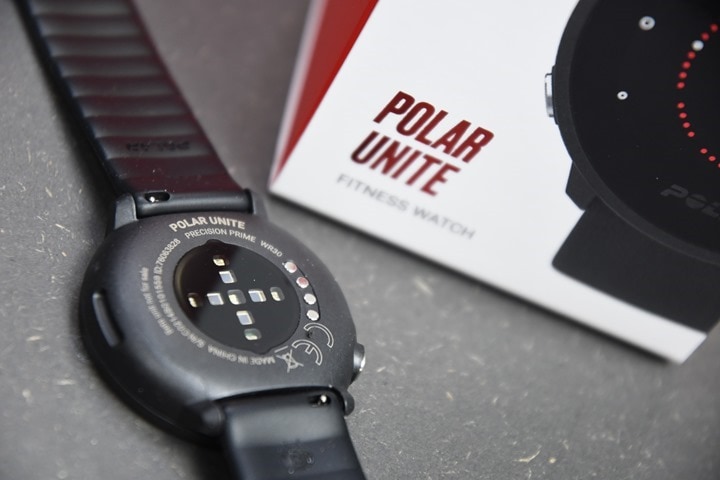
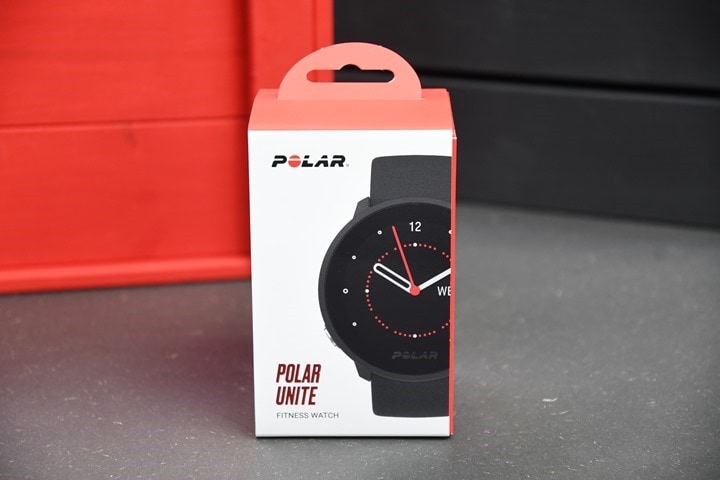
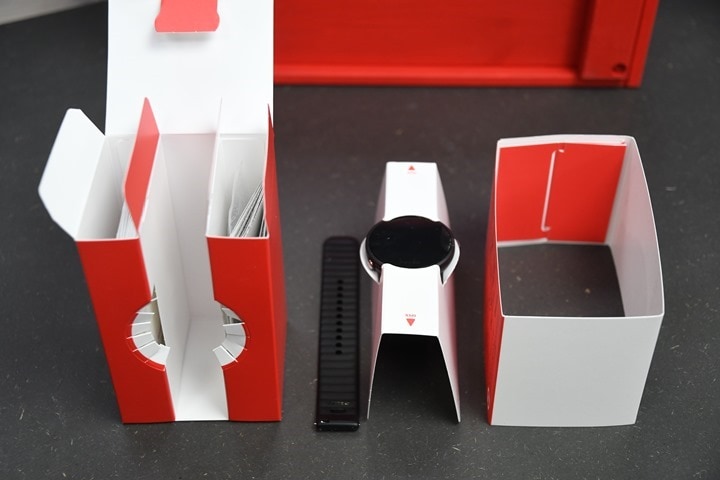
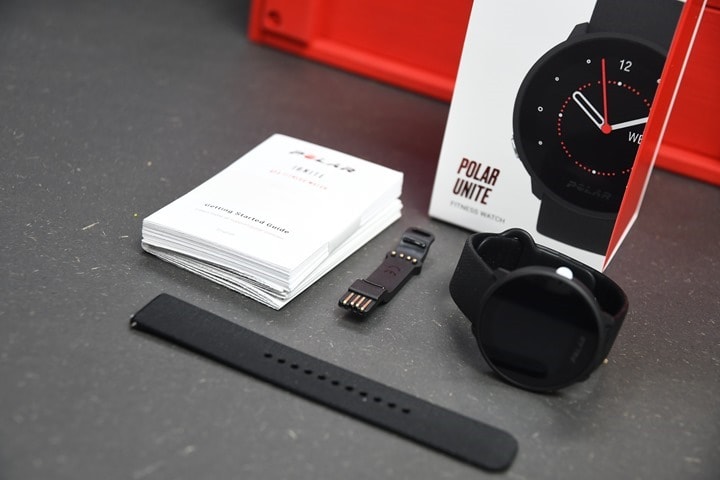
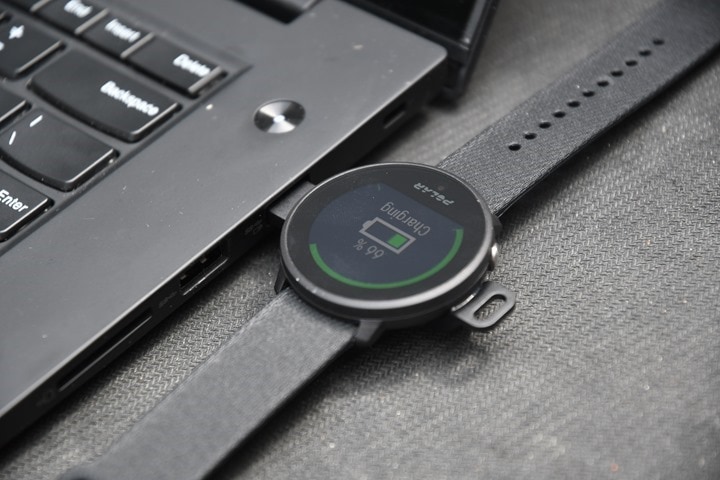



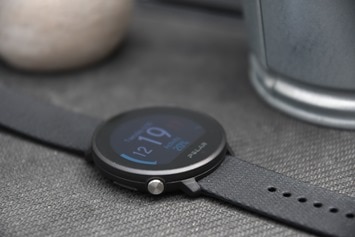
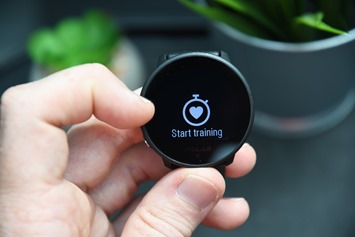
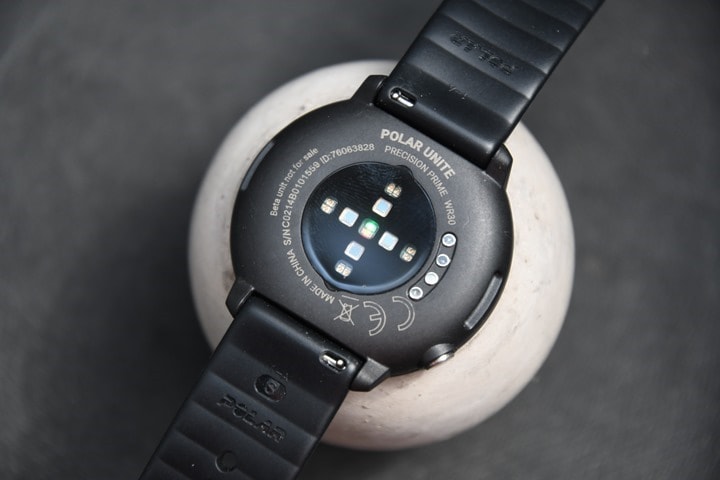
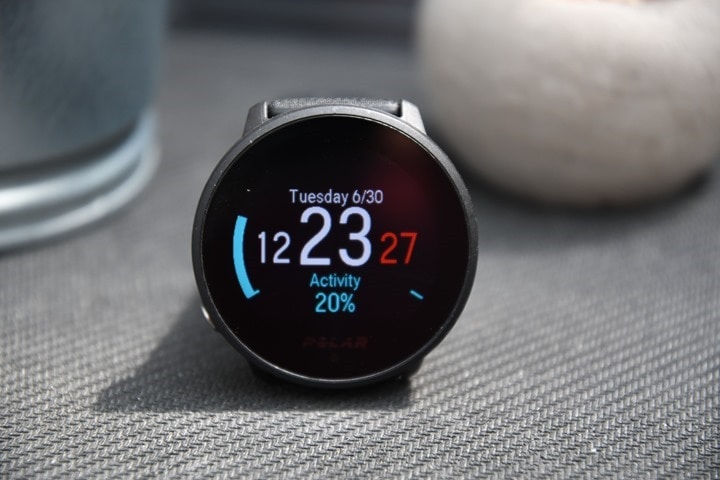
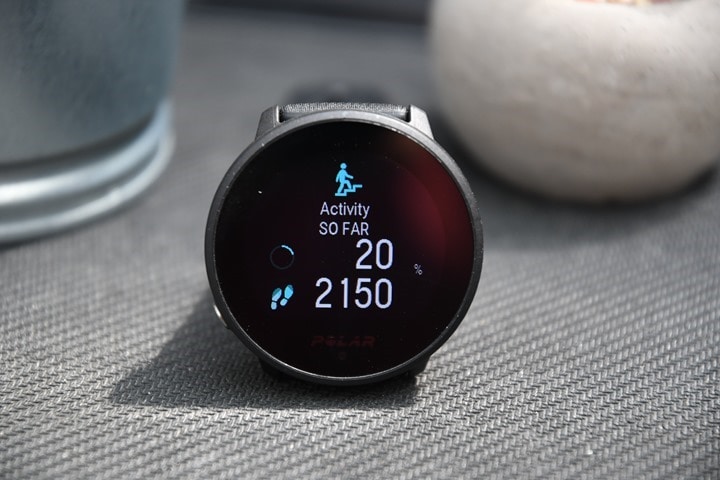
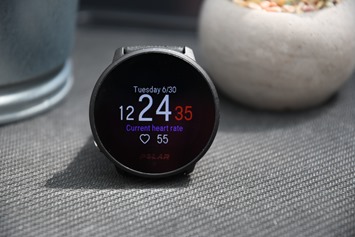
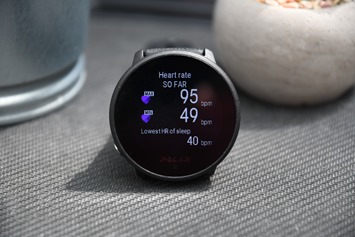
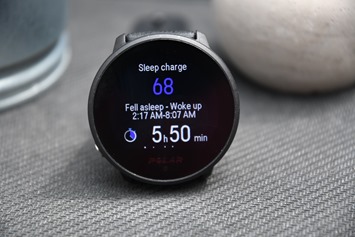
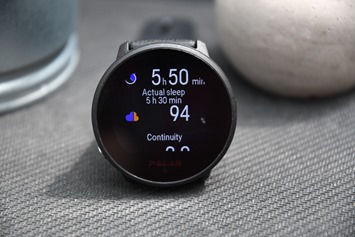
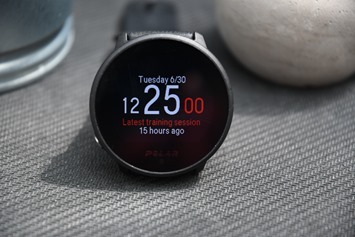
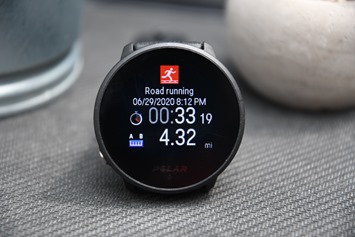
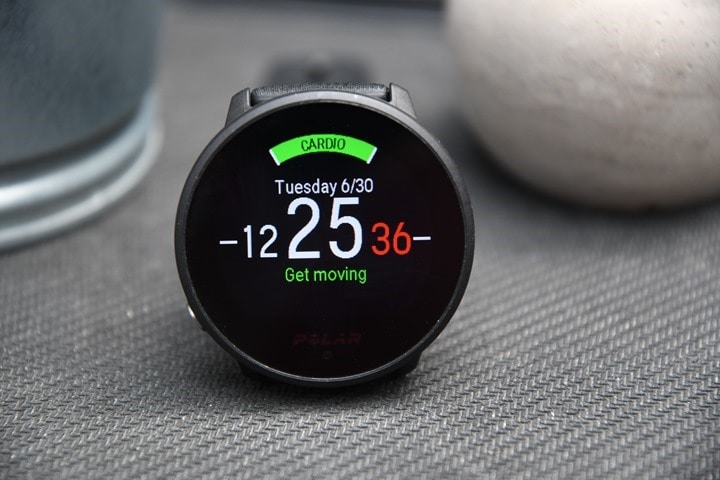

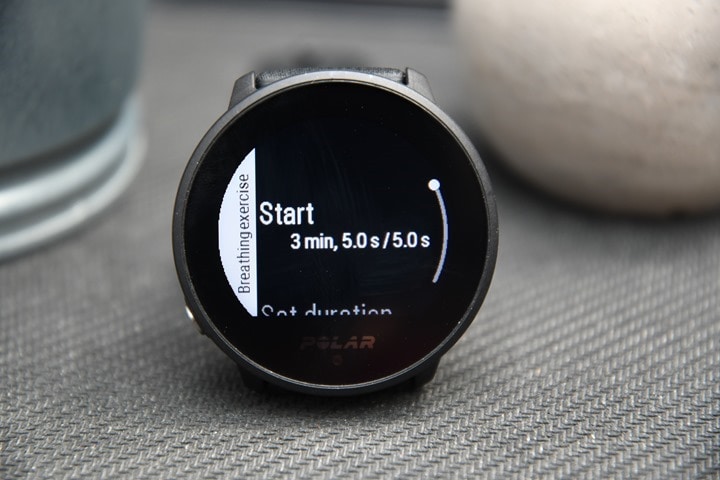
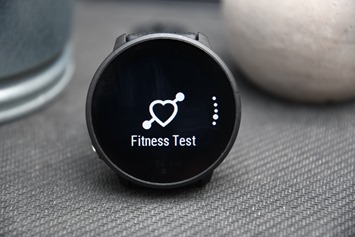
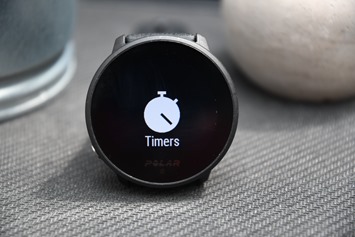

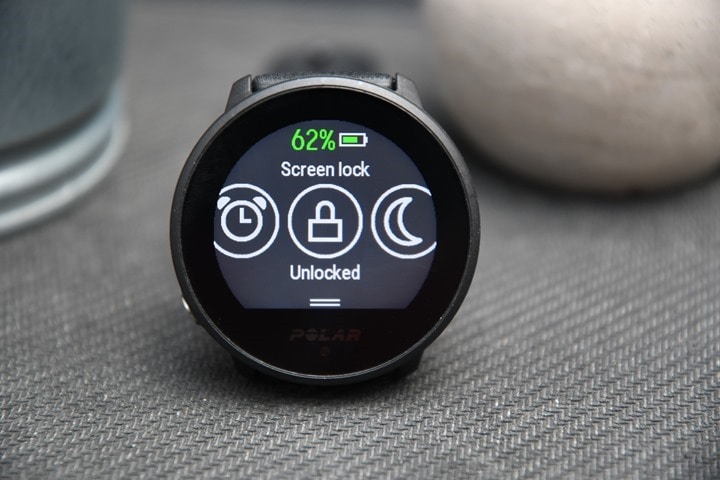

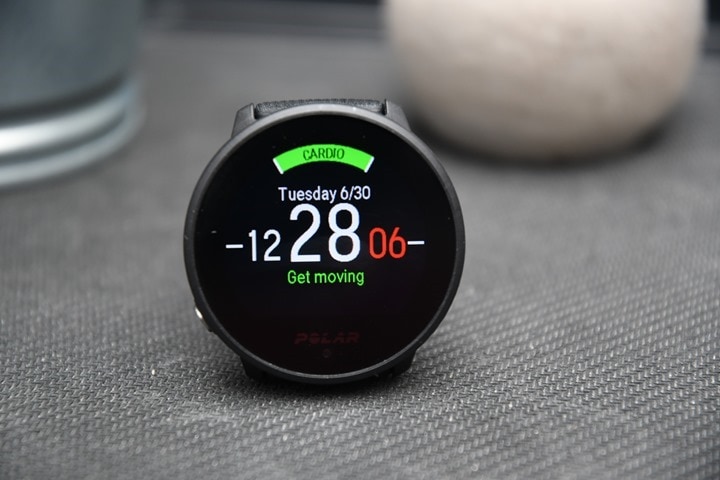
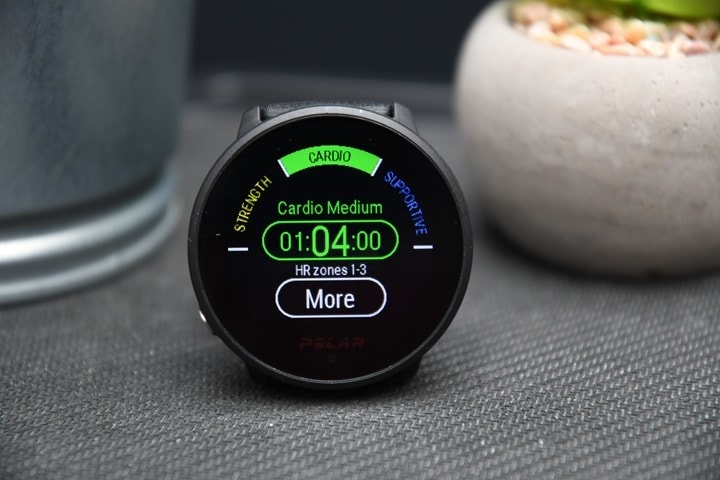
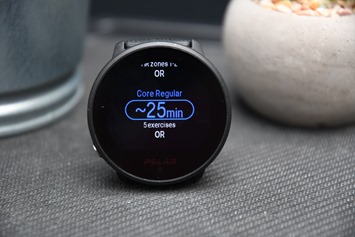
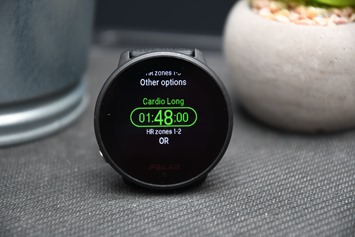

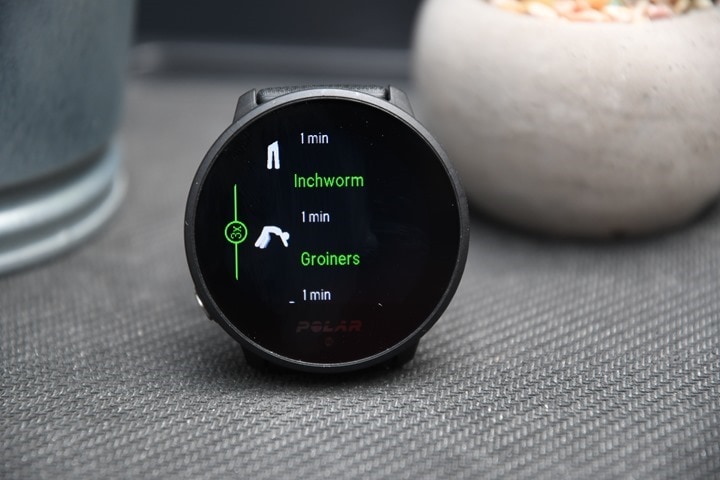
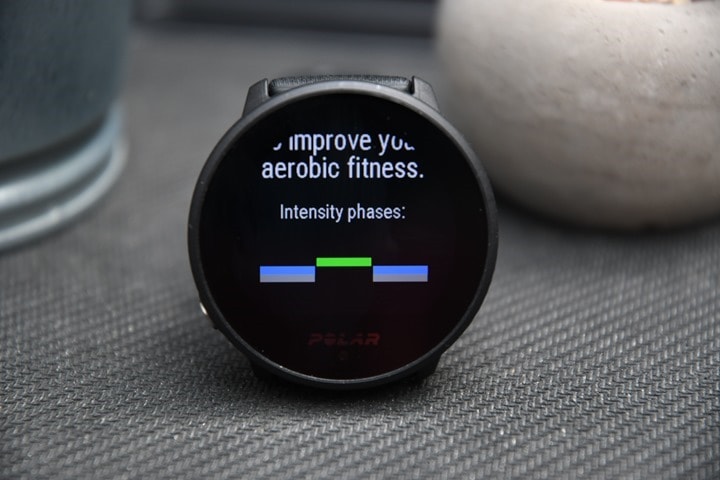
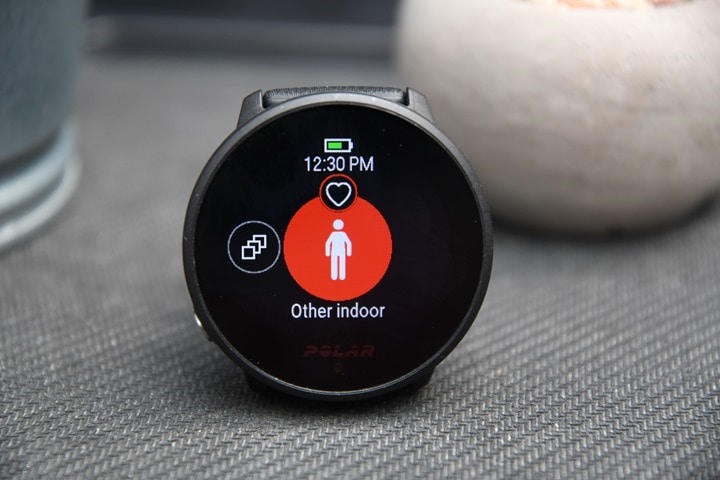
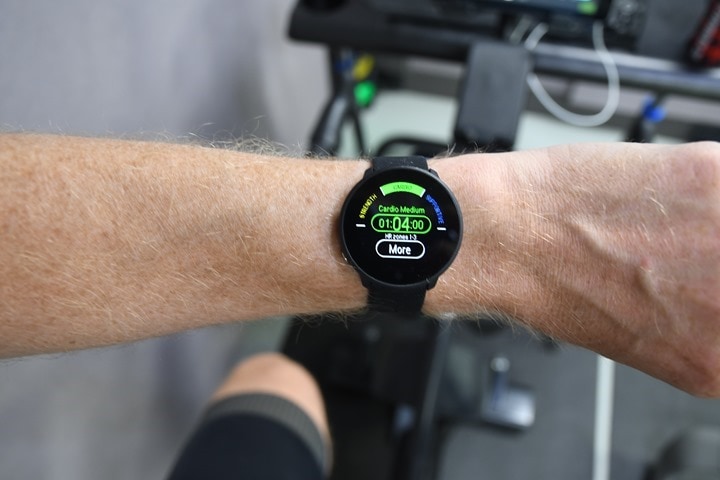
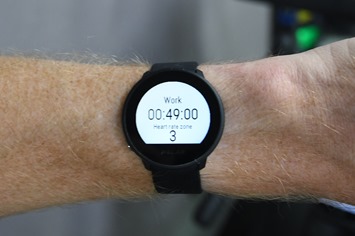
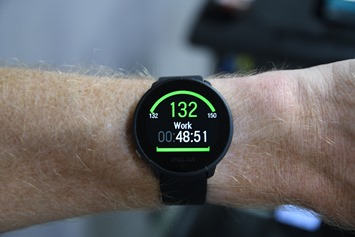
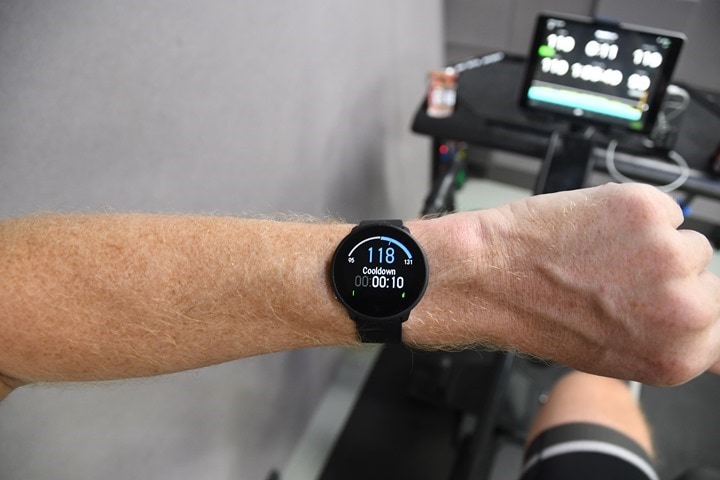
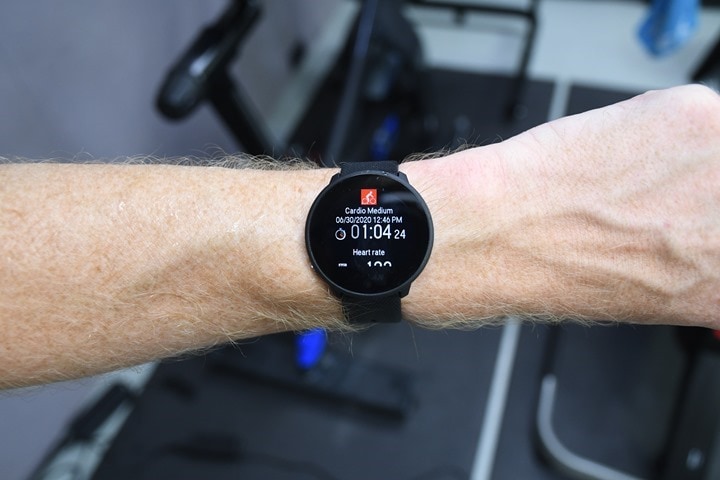

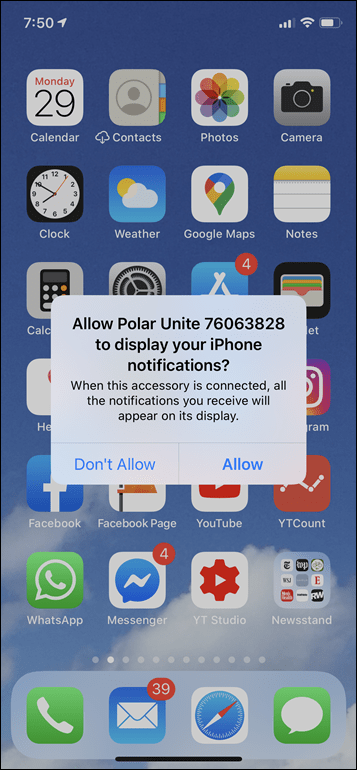
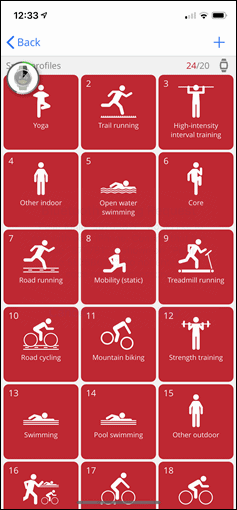
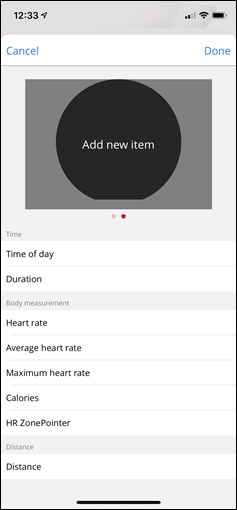
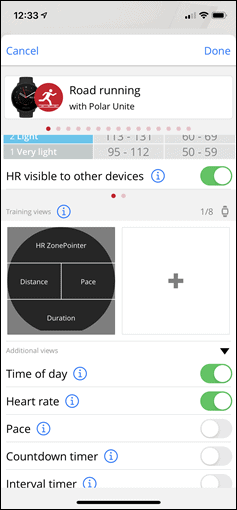

![clip_image001[7] clip_image001[7]](https://media.dcrainmaker.com/images/2020/06/clip_image0017_thumb.jpg)


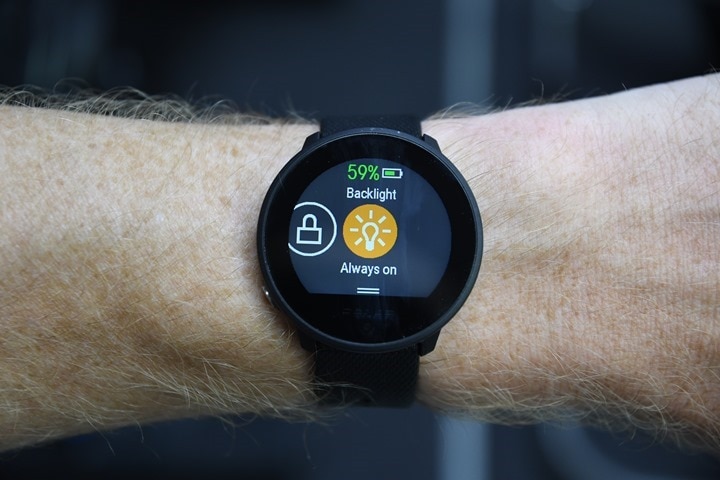
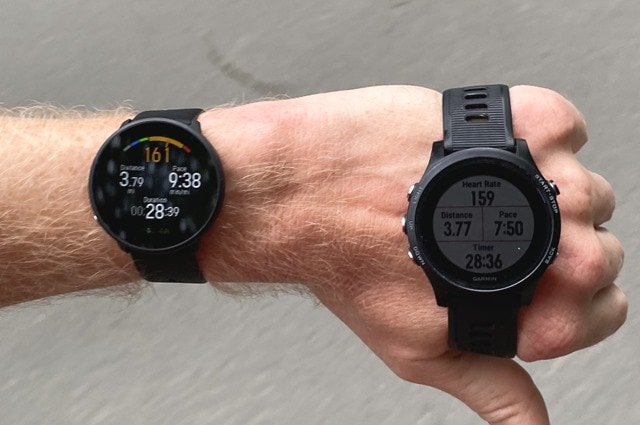
![clip_image001[9] clip_image001[9]](https://media.dcrainmaker.com/images/2020/06/clip_image0019_thumb.jpg)
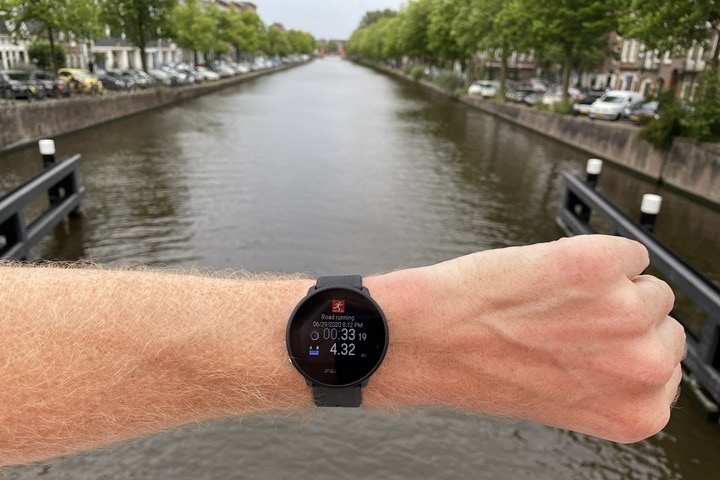

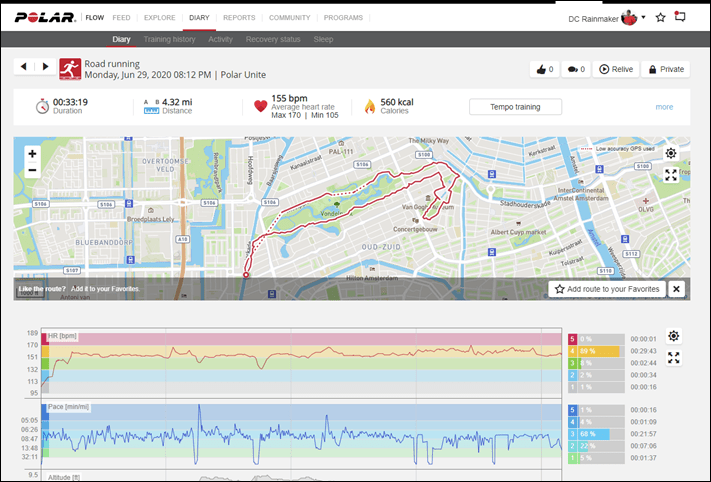
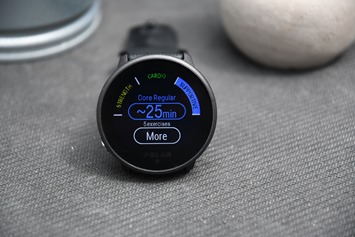
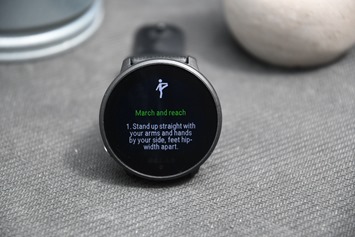
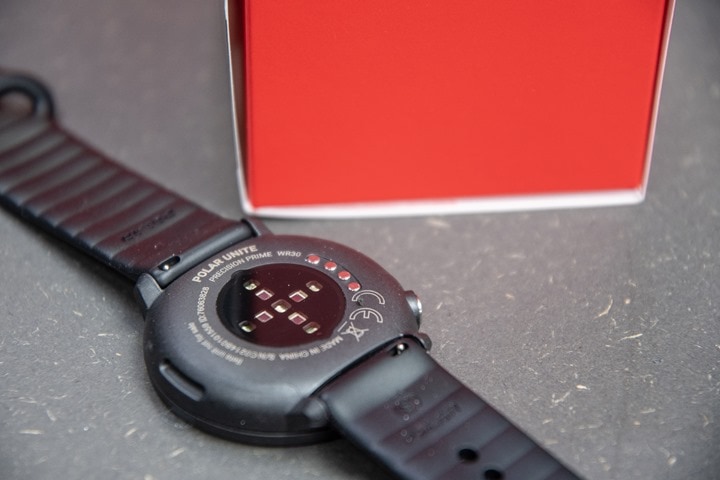
![image_thumb[1] image_thumb[1]](https://media.dcrainmaker.com/images/2020/06/image_thumb1_thumb-1.png)
![image_thumb[4] image_thumb[4]](https://media.dcrainmaker.com/images/2020/06/image_thumb4_thumb.png)
![image_thumb[6] image_thumb[6]](https://media.dcrainmaker.com/images/2020/06/image_thumb6_thumb.png)
![image_thumb[8] image_thumb[8]](https://media.dcrainmaker.com/images/2020/06/image_thumb8_thumb.png)
![image_thumb[10] image_thumb[10]](https://media.dcrainmaker.com/images/2020/06/image_thumb10_thumb.png)
![image_thumb[15] image_thumb[15]](https://media.dcrainmaker.com/images/2020/06/image_thumb15_thumb-1.png)
![image_thumb[19] image_thumb[19]](https://media.dcrainmaker.com/images/2020/06/image_thumb19_thumb-1.png)
![image_thumb[21] image_thumb[21]](https://media.dcrainmaker.com/images/2020/06/image_thumb21_thumb-1.png)
![image_thumb[23] image_thumb[23]](https://media.dcrainmaker.com/images/2020/06/image_thumb23_thumb-1.png)
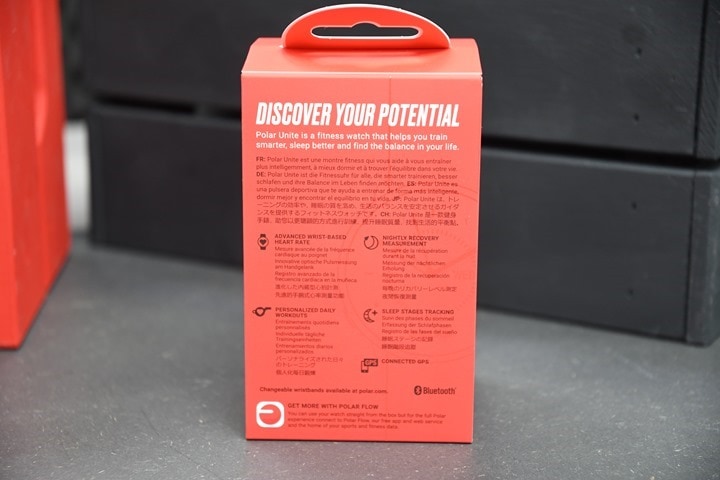
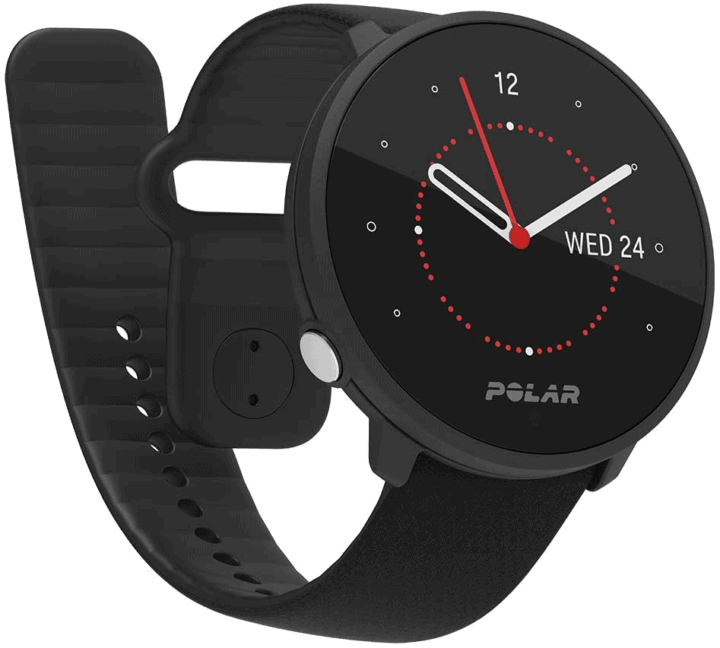
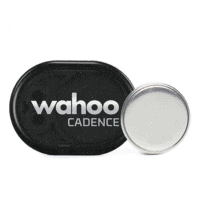
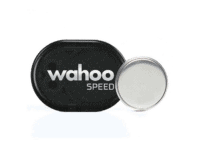

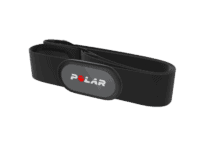
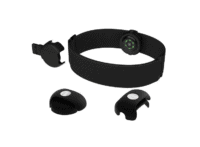






















Help me out here – why does polar keep changing their charging cable design? I kind of like the magnetic charger that they have on the Vantage/Grit/Ignite – why change it for the Unite?
I suspect with the loss of the bump, it means the spot for the magnets probably went away. :) Which in turn, kept the charger on.
That said – I totally agree, it was always a nice dependable charger. RIP Good Charger.
I like the move to a smooth he sensor on the back. I tried a grit x but couldn’t get on with the large protrusion of the hr sensor – it pressed in and cause a lot of discomfort. Here’s hoping that thin case and smooth design comes to a new vantage or similar and then I’m in.
So is this like the “new/updated” version of what the A360/A370’s where?
Nah, it’s basically a slightly (very slightly) reduced Ignite. The A360/A370 were more band-focused.
Thank you sir!
Will it work with Polar 5 kHz chest straps (e.g. H10) for swimming?
No, only pairs with Bluetooth Smart (but that doesn’t work underwater as you probably know). But it will at least do optical in swimming..whether it’s accurate though…
“And two drinks for when I mistype Unite as Unit or Unite.”
Sorry liver, you heard the man.
Damn it!
no go since it does not have internal GPS. I thought it was a stupid idea when magellan did it, and more so now. I do not want to always have to run with my phone.
I really don’t like the direction Polar have taken since the Vantage line (M430, V800 were excellent devices!), but in their defense: The Unite is hardly aimed at runners/cyclists,OW swimmers, in short: athletes that do GPS based activities.
So Polar have dumped the Vantage series for the Gritx, does this mean they are about to dump the Ignite platform?
They announced back in January the Vantage series had seen the end of the update road. At the time of the Grit X though I asked whether they saw that as the successor to the Vantage series, and they said no – adjacent category.
How’s the back light at night? Is it lighting up the world or smart enough to stay off?
It’s both. ;)
It’s lighting up the baby when I need to change her (she was very displeased about it at 2AM), albeit, on a 3 or so second timer. But otherwise it stays off.
I’m assuming that these companies use some sort of conjoint (or trade-off) analysis to work out what features people want and are willing to pay for. Though there are different market segments so that one size will never fit all.
However, the best bit for the consumer is it means they keep developing and innovating.
Is Polar aggressively pushing subscription services with this device? I don’t mind a little solicitation for extra value added services, but Fitbit totally put me off with, “Sure, it’s a continuous HR monitor… But if you *really* wanna know what’s going on with your HR, pony up some cash… Monthly… Forever.”
They have no subscription services.
That’s sorta amazing. I use a borderline elderly Polar M400 for tracking exercise, this sounds like it might be a nice replacement (I can loose the GPS of the M400 `cause the the only time I need it is on the bike… a bike that now has a Garmin 530 on it (largely attributable to your reviews…)
I was actually considering buying a Ignite, now it seems that I have an extra option.
As I am more of a gym rat I don’t mind the dropping the GPS, but I have a concern when it comes to battery life. I take battery life serious and while on paper it’s only one day it seems strange considering it mostly does the same thing.
Is the Unite touchscreen more sensitive that Ignite? there are a couple of Ignite reviews complaining about that.
I’m pretty sure they are talking “sports,” not “spots.” But maybe they are into Dalmatians? :)
Are there any chances Polar will release Vantage V Ver2 this year?
HR Broadcast?
HR broadcast with Unite seems to be BLE advertisement. Also supported with OH1 ja H10 and I assume with Ignite. Last byte of manufacturer specific data is HR when workout started and HR broadcast enabled. You can see it with e.g. nRF Connect App.
So when I tried that back when, I don’t think it actually worked with any apps (it would fail to pair). I can try it again though in the coming days.
Or, if someone else can try it, that’d be great too. I’d ensure it shows the HR in an app like Zwift or something, and that the values change once the HR strap is selected and saved (technically speaking, when in the Zwift pairing screen it enumerates sensors differently than after that screen, so you’ll want to go in-game to validate). Or, an app like the Wahoo Fitness app works too.
How is the flat tire display still a thing? That and no GPS. Sorry, Garmin is still way better.
The Garmin 145 (s) were $149 for a while on Amazon with built in GPS – why would I get a non-GPS from Polar for my wife or someone else?
At $149, that’s a pretty tough question. At $199, I’d say a reason someone might want the Polar is more of the ‘on-demand’ workouts bit. Basically FitSpark and everything that comes with it. Or the more advanced/better sleep tracking. Or simply the prettier display.
Ray, stray “d” at the top of that article…
In Australia Suunto 3 is currently $100 cheaper than Polar Unite ($249 vs $149) which makes it seem expensive given no GPS on both. I really can’t see a market for Non GPS watches other than regular gym people who are already spending way more on gym membership.
I think it looks promising for Polar. I have an Android phone, so the Apple Watch 3 would not have much value to me. In workout mode when you were turning on the always-on display, did that take a big hit on the battery life? Also, in workout mode, can you set it to have a white background rather than the dark background? Thanks, Ray!
I don’t see any inverted display option. While I’m normally not a fan of white text on a black background (perhaps because it’s a @#$@# nightmare to photograph in most cases), it’s crazy crispy/bright in real-life.
That running pic was taken on an evening run with overcast conditions without stopping.
As for a hit on battery life, it seems to certainly burn more. I need to do some exact numbers, but I finished my ride yesterday (an hour) and did a brief double-take on the battery remaining. But maybe I just got the initial start of ride battery wrong.
I see. Maybe you can discuss the battery life hit in your full review then. It’s too bad about the inverted display. It would have been nice. Bit at least there is an always on option for workouts. Thanks, Ray!
At least it is good that Polar is launching new devices in a more frequent way. However for my personal needs and the given price-point now … I would choose a different option (even within the Polar product-range)
Do You know, if they’ll also release a new scale for their so called Fitness Family? The previous Balance scale is now quietly discontinued.
Not aware of anything there.
For me this could be a serious competitor to the likes of Whoop if Polar shifted their marketing and made some minor tweaks to the way sleep data is presented. Having used a Whoop for a little over 6 months before swapping to a Vantage M, the Polar sleep tracking seems every bit as good, but the recovery score is far more transparent (I can see my HRV variation over the 4 hour period used to determine the score) and Polar have released White Papers backing up what they do. Wrist-based sleep tracking isn’t perfect, but at least Polar don’t pretend it is.
The only thing the Polar implementation lacks is sleep coaching, i.e. “Today you worked out hard, based on past data we think you need another 45 minutes sleep tonight”. This is the one area Whoop was excellent.
The reason I think the Unite would be a perfect Whoop alternative? The whole watch costs less than a 6 month Whoop membership, it has an actual fitness tracker built in, and oh yeah, it doesn’t tell you you’re working in HR zone 4 doing the washing up…
Diameter is 43.4mm, slightly less than the Vivoactive 4 (45mm), noticeably larger than the 4s (40mm).
Will (this) Polar upload indoor activities like yoga to Strava? The various Fitbits, including the Versa, never did for me, whereas the Vivoactive did straight out of the box (ok, so I already had Connect configured for Strava)
Ray, in the summary you state “I suspect most buyers at this price point would choose an Apple Watch Series 3 for $20 more.”
The problem with this is that you assume everyone has an iPhone. If you don’t have one then that option is a whole lot more expensive (need to buy an iPhone) and not everyone wants an iPhone so for some it isn’t even an option to consider.
That’s true, it won’t work for non-iPhone users.
@Meredith
“…not everyone wants an iPhone so…”
Everyone wants an iPhone…but not everyone has one ^^
That’s funny Fred
I have an iphone (actually I have two) but I don’t want one. They are incredibly annoying things to use.
I wonder how Polar is handling the loss of the charging contacts for determining how good of contact the watch has with your skin. I thought this was core to Polar’s Precision architecture.
The whole skin-contact detection was merely marketing. Algorithm’s are sophisticated enough to know if there’s a beat or not. Both my M and V’s OHR sensors still come on regularly when they’re on a shelf and not on my wrist, only to shut down again when there is no HR to measure. My 935 does the same without a fancy Prime Precision sensor. I’ve used an M for 10 months, and a V for a year. They were neither more nor less accurate than my 935. Running with the M/V and 935 one on each wrist usually resulted in the exact same avg. HR and a HR max of +/-2-3bpm.
Interestingly enough, I actually asked about the skin detection. It’s actually still there – just now via the optical sensors instead.
I think the most exciting feature of this watch which no one seems to have picked up on is the strap material seems to have the ability to make you invisible, judging by the first wrist photo in the GPS section.
See, everyone’s focused on training features, coaching, and AI. But Polar knows the way to our hearts is going back to every kids childhood goal: Being invisible.
I don’t think the lack off GPS is always such a loss for all these watches. I’ve used a Fitbit without GPS for a number of years, and the distance tracked is actually quite accurate, when I compare it to distances manually measured out on Google maps. Yeah sure I can’t see a nice visual map of the track I ran but I don’t tend to go out and share those routes on social media either way.
Have you found at least distance tracking unreliable without GPS?
I haven’t tried the Unite sans-GPS for running on an entire run, except for the parts that it dropped on my run the GPS, which turned out to be relatively close distance-wise actually.
Will it pair with a polar OH1 strap?
Yes.
I currently have a Forerunner 245. Do you think Polar’s nightly recharge feature is more useful than Garmin’s body battery for training / recovery guidance?
From the Polar webpage it looks like the Ignite has training load pro and cardio load, while the Unite does not. Those seem like useful features and an argument in favor of the Ignite. Wouldn’t you think so, Ray?
Great review.
I think you’ve mistakenly included the Running Index, or Vo2Max, as one of the Unite’s features. According to the Polar website, this feature has been taken out along with the Running Index analysis and Training Load metrics.
While you still have the 5 minute, manual Fitness Test, the lack of a post-workout, watched-based VO2 Max score I think is a major omission even at this price point and deal-breaker for me. As you note, Vo2Max metrics are a ‘thing you expect’. It’s such a basic feature in all smartwatches with Firstbeat, for example, that I don’t understand why it’s been stripped.
I’m looking at a watch primarily for tracking recovery metrics such as 24/7 heart rate, resting heart rate, and sleep tracking. Obviously this does all of those pretty well, going by your review. I would also use it for basic activity tracking, such as leisure hiking, casual cycling, or occasional running (primarily a cyclist). I’d be more than happy to take my phone with me on such activities, so I don’t really need the GPS, however the added accuracy would be nice.
In your opinion, which would be better value – Polar Unite at £134.50, or Polar Ignite GPS at £149.00?
As you’ve pointed out, there are a few small improvements over the Ignite. Would you say that I’m better spending £14.50 and getting the GPS and slightly better battery, or saving and getting the slightly updated HR sensor.
Another side question – If I go for a ride without starting an activity on the watch, will it still record as an activity in order to suggest stretches through fitspark? I like the idea of having a customised recovery program.
Where are you seeing the Ignite for £149?
I’m still looking myself but at that price it would be a no-brainer to pay the extra £15 for the GPS function and all the extra metrics.
Answering my own question here, I found it here for £149 so bought it! Thanks for the tip off!
link to fhinds.co.uk
I decided to give the Ignite a go as well. I am primarily interested in the sleep / recovery / fitspark stuff, but I do run and bike outside a few times a week so the built-in GPS and additional running metrics was worth it to me (the few months a year where it’s possible anyway…).
Ray, ever fancy re-reviewing the Polar Vantage series? My understanding is that, since being launched unfinished, they’re now much improved on the software side. It would be good to know exactly what the state of play with them is.
I kinda touched on various updates along the way in posts, such as when they added major features. And now with the Grit X basically being a Vantage+ of sorts, and with the Vantage series headed off into the sunset, it’s harder to step back and re-review something that’s realistically on it’s way out.
Ironically, I do actually often use a Polar Vantage V in comparison testing. In fact, one sitting less than a foot from me on my desk right now.
It seems so strange that the Vantage family were only “finished” in January with release 5, yet you’re right, between the Ignite and the Grit X it’s hard to see the role the Vantages perform.
Still, it would be nice to see a round-up of where the Vantages finished. I know you’ve discussed the updates along the way but they’re hard to find and afaik, you’ve not updated the original reviews.
Do you have a discount code for the ignite that would work in Canada ?
Hey DC,
Other than on your Features/Functions list it’s difficult to see if you can actually swim with it and it’ll measure your swim data.
Do you know if this is true or not?
I know not everyone has access to a pool right now so that may be why.
Cheers!
Will Unite work while mounted on bicycle handlebars and using a Polar chest strap? While I mountain bike, I want to just glance down at my heart rate and not have to keep taking my hand off the handlebars to raise my wrist and see the watch… In all other situations, I would just wear it normally on my wrist.
Yes
I needed to use search to find this review, it doesn’t appear in the Polar list.
How do you think the OHR in the Unite compares to the OHR in the Ignite in terms of accuracy?
Thank you for your detailed review, I enjoyed this one.
I’m curious if Polar is able to fix the kinks in OHR via Software.
Haven’t had a Smartwatch to this date, but the Unite seems like a perfect start.
Would love to pick you brain also considering my thoughts on wearing the watch on the inside, reasoning behind is:
OHR seem to be more precise on “fleshy” tissue, than “bony” one.
Does Polar offer a workout auto-detection like FitBit? I want to get away from FB, but I love the auto-detect so I can just jump into working out instead of having to swipe, click, swipe…
Thanksfor your excellent review. I bought the Unite and used it just a couple of days. Hard to het the display on without using the button. At the same time happely surprised by the 14.000 steps that I did whilst cycling. That rally als up in the calories burned. Looked at Polar support to find out that the vibrations transities through the sfeer van be detected as steps. In my opinion this makes the watch rather useless for follow-up activities and contingent calories. Is there a solution to avoid contingent this vibration steps?
Sadly, virtually every activity tracker out there includes cycling ‘steps’. Sigh…
Hi, I have been using the Unite on and off for the last 3 – 4 months. Right now I am using my old M430 instead. This watch has a fatal flaw for anyone who charges their watch in more than one place: instead of a charging cable, the Unite uses a very small piece of plastic. (5.47 x 2.17 x 0.79 inches; 0.5 Ounces) Mine got lost after a month. One of kids took it out of the usb charger and didn’t know where he placed it.. So, I paid the $15+ dollars + tax, to get a replacement piece. I few days ago, i left it at work on my desk. The janitor probably thought it was garbage. It is gone. I don’t want to give polar another $15+ dollars. I’d rather just sell the watch on Craigslist and get a different one.
Hi Carla
I had a unite as well. Got it about mid December 2020. Lasted until today. 7 weeks isn’t too bad.
None of the features on it were useful to me. I only got it to make my OH1 work. I only used it to check my heart rate after a run. I do plenty of other workouts but never bothered using it for them.
I found it to be really annoying to use. The band was very fiddly and took much longer to put on than any other watch I’ve owned. The touch screen needed about half a dozen attempts every time to make it work. The screen rarely lights up when the watch face is tilted.
In order to turn it on permanently you have to have started your workout. Well done polar! Lets get users to stuff around with it while they’re running / swimming. Oh and the touch screen is useless in the rain, which rules out using it in the wet season in the top end.
On start up it would be very inaccurate for up to ten minutes or so.
Also it would freeze and not respond to anything. Had to work out how to restart it.
I did get it to work maybe six or seven times.
Every time I used it it was dead flat so I’d charge it up, set the date and time, and away I’d go. But tonight it didn’t record anything and that was a bit frustrating.
I’m not going to bother with it anymore. I smashed it and the OH1 with a hammer and threw them in the bin. I also threw out all the bits that came with them but if you like I can dig around and find the charger for it. You can have it if you like.
Anyone need the clip for the goggles? Still in the plastic bag it came in.
Polar used to do good stuff but I won’t use them again.
Thank you for this review! It sounds exactly what I’ve been looking for! I ordered mine today, using your Amazon link.
Lorrie H.
Thanks for using the link – appreciate it!
I have a Suunto M5 which I love but needs to be replaced now as I cannot sync it with anything as too out dated sigh (unless you know if it can be paired with something to make it sync with an app?)
I am looking for a watch which has the adaptive training programme like Suunto. I have tried Garmin and just cannot get on with it. The Suunto nags me “exercise day” on the first screen, no escaping it which I like. When speed walking (as am building up from VERY couch potato) the M5 would tell me my HR was too high and to lower it. The garmin forerunner 45 didn’t do this. Same if my HR is too low it will say speed up.
Would this polar with the Fitspark function do the same thing?